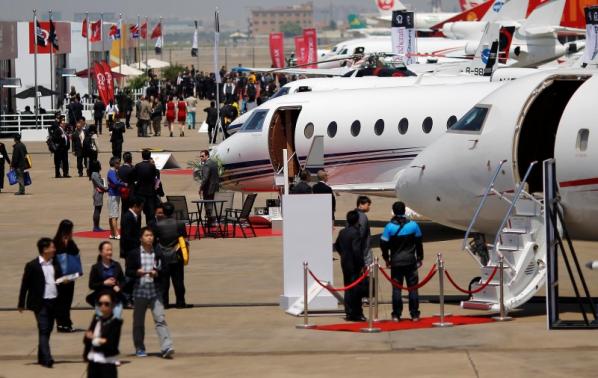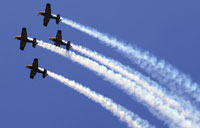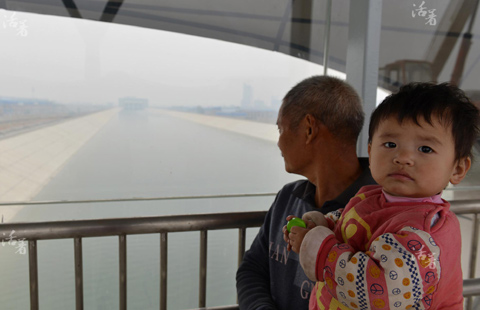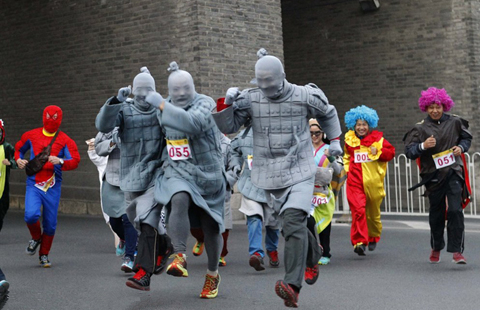
 |
|
Guests walk next to aircraft during the Asian Business Aviation Conference and Exhibition (ABACE) at Hongqiao International Airport in Shanghai in this April 15, 2014 file photograph. |
 |
| General aviation hub reaches for the sky |
The civil aviation authority's own training unit can only handle up to 100 students a year. With the rest of China's 12 or so existing pilot schools bursting at the seams, foreign players are joining local firms in laying the groundwork for new courses that can run to hundreds of thousands of dollars per trainee.
"The first batch of students we enrolled in 2010 were mostly business owners interested in getting a private license," said Sun Fengwei, deputy chief of the Civil Aviation Administration of China's (CAAC) pilot school. "But now more and more young people also want to learn flying so that they can get a job at general aviation companies."
While uncertainties remain for what will be a brand new industry, firms are betting they can make money and trainee pilots are convinced they can land dream jobs. Among them is Zong Rui, a 28-year-old former soldier in the People's Liberation Army from Shandong province in east China, attending a pilot school in Tianjin, an hour's drive from Beijing.
"The salary is good for a general aviation pilot," Zong told Reuters by telephone, preparing for a training session. Even without a job lined up, Zong is certain money he borrowed to learn how to fly will pay off: "I can easily pay back the 500,000 yuan ($81,750) tuition in two years, once I get a job."
OPEN SKIES
By the end of the year, industry executives expect Beijing to issue detailed guidelines on how it will implement plans unveiled in 2010 to open up airspace below 1,000 metres in 2015, expanding the open skies to airspace below 3,000 metres by 2020.
Global makers of small planes, like Cessna Aircraft Company , Pilatus Aircraft Ltd or Piaggio Aero Industries SpA, have long had their sights on China's burgeoning general aviation market.
Now they're being joined by air service providers like Tasmania-based Rotor-Lift Aviation, which has helped train pilots in Hong Kong, Malaysia and other Asian countries.
"I came here for opportunities," said Peter McKenzie, Rotor-Lift training manager. McKenzie has been in talks to establish a training programme for Chinese general aviation pilots in Australia as well as a joint venture.
Taking training outside China is an option also favored by China's biggest aircraft maker, Aviation Industry Corporation of China, which has invested in a flying school in South Africa.
Other foreign players include Spain's Indra Sistemas , the first foreign company certified by CAAC to implement a full flight simulator for helicopters in China. Canada's CAE Inc also operates a partly-owned flight training center in south China.
While the majority of new trainee pilots set their sights on a license as a means to a career, for some among China's more affluent classes it's a key to a flamboyant new hobby.
For Li Zheng, 33-year-old owner of an advertising company, driving a fancy car isn't that exciting anymore: He has set his sights on flying his own plane.
"I love sports, especially those with a challenge, like flying," said Li, a former hot air balloon racer, speaking just before a training flight. Li's ultimate goal: buying an airplane to fly with his wife, who recently joined Abu Dhabi-based Etihad Airways as a flight attendant.








